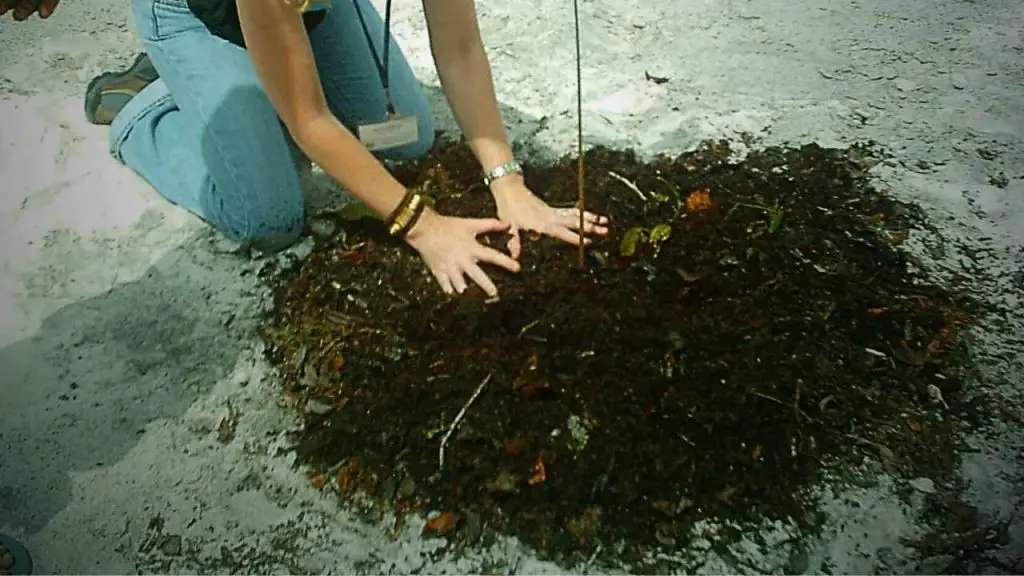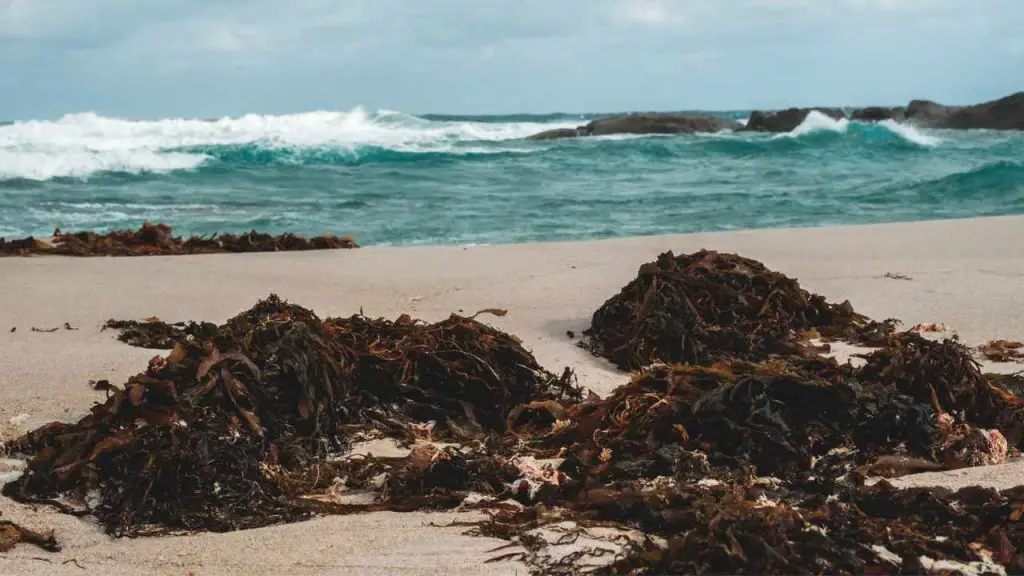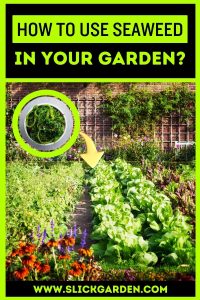A gardener is willing to do anything to improve his plants. If they find something that can be useful for their plants, they do not hesitate to use it. Here we will tell you about a thing that has countless benefits in the garden.
That thing is seaweed. Usually, you go to the beach and collect shells and sea glass. Now, whenever you go to the beach, you must collect one more item which is seaweed. It is used as a natural soil amendment.
A healthy garden is the dream of a successful gardener and Mother Nature offers you seaweed. Use it in your garden and make it a perfect growing area.
As the name shows it grows in the depths of the ocean, rivers, and lakes. Seaweed is marine plants and algae that grow in water bodies. It is proven that seaweed has substances that help to improve the structure of the soil.
Seaweed contains all the basic nutrients such as nitrogen potassium phosphorus with natural growth-promoting phytohormones. All these nutrients are essential for the best yield of your plants.
You can say that it is a great natural fertilizer that helps to boost your plants. This organic fertilizer contains different elements that are not found in animal manure.
Benefits Of Seaweed In The Garden
Now we will tell you what are the benefits of using Seaweed in your garden.
- When you apply seaweed for mulching on the surface of the soil in your garden it will help to keep the soil moist. Moisture is very important for the plants. You should not compromise on it. Mulching helps to prevent the moisture from evaporating.
- The other benefit of mulching with seaweed is it stunts the growth of weeds. As you know weeds are unwanted plants that steal nutrients from the soil. If you want to stop the combat between the weeds and the plants for nutrients, you must use seaweed for mulching.
- In gardening, the biggest problem you face is pests. These tiny monsters damage your plants and all your hard work goes to waste. Seaweed contains salt that repels many pests such as slugs.
- When you apply seaweed as a fertilizer it will provide minerals and hormones to the soil that stimulate the growth of plants. Carbohydrates present in the seaweed are essential in encouraging the growth of plants.
- The micronutrients in the seaweed are absorbed by the plants and they are ready to use without any chemical decomposition.
- If you have hard soil in your garden then the application of seaweed improves the structure of the soil. Because it will be incorporated into the soil and aerated so the roots of the plants can breathe easily.
- You can easily collect it from beaches without spending any money.
How To Collect Seaweed?
If you are living near a local beach or waterway then you can obtain seaweed from there. The following points should be kept in mind while collecting the seaweed.
COLLECT SEAWEED FROM UNPOLLUTED BEACHES
There are pollutants in the water and seaweed can easily absorb them. Make sure you select a clean and unpolluted beach for gathering seaweed in your garden.
GATHER MID-BEACH
The seaweed found in the mid-beach is drier than at the tide line. When you gather the seaweed from the mid-beach then you can easily carry it. Fewer bugs are found in the seaweed on the mid-beach.
USE FINE, BROKEN-UP SEAWEED
You must choose smaller leaf sizes of seaweed for your garden. If you select wide pieces of seaweed then it will be difficult to use around your favourite plants in the garden.
USE ONION SACKS OR WOVEN POLY BAGS OR BUCKETS
You must use onion sacks or woven poly bags for collecting seaweeds. These bags are very lightweight. The water contained by seaweeds drains out easily from the onion sacks. Avoid using plastic garbage bags because you can’t handle them easily.
Your hands become slimy when you pick the seaweed. If you transfer seaweeds in the plastic bag then it will make them slippery.
LIMIT YOUR IMPACT BY PICKING LIGHTLY FROM SEVERAL AREAS
Seaweed is a food for many small marine animals. You should not pick more than a third of seaweed from any area of the beach. If you want to pick more seaweed then you should move to another spot.
USE SEAWEED QUICKLY
After picking seaweed starts decomposing and if you leave it for a long time it will become less beneficial for you. You are applying seaweed for nutrients so make sure it breaks down in the soil to make it more fertile.
DON’T WASH SEAWEED
Seaweed contains salt, but the harmfulness of salt for plants is not proven. The interesting thing about salt is that it repels the pests so you should not wash this weed otherwise it will lose salty nutrients.
Different Ways To Use Seaweed

Now we will tell you how you can use seaweed in your garden for different purposes.
1- DISEASE PREVENTION
When various diseases attack your plants, they kill them. You have to use different organic matter to protect your plants. When you apply seaweed your crops show resistance to different diseases such as Albugo Candida, Sclerotinia Minor, and Plasmodiophora.
Many reasons cause fungal diseases that can destroy your plants’ health. It is not easy to protect your plants from disease. You must have heard that prevention is better than cure. You must apply seaweed as a mulch or fertilizer or in the form of compost to improve the immune system of your plants.
2- PEST CONTROL
Seaweeds are used for improving the growth and increasing the yield of your plants. As you know pests are a big problem in the garden. When you use seaweed for mulching on the soil then there is no fear of slugs and snails.
After the application of seaweed, you will not see slugs and snails. Seaweeds contain salt and sharp-edged materials that repel the slugs.
When you apply seaweed in the garden, after a few days it will turn into a crispy material that is not liked by slugs as sharp salty edges of dried seaweed cut their soft body tissues.
3- USE AS MULCH
There are many benefits of mulching. It helps to restrain the growth of weeds and helps to maintain the moisture level in the soil. When you apply seaweed for mulching in your garden you should follow the following steps.
- The first important thing about Seaweed is that you should use it quickly after picking it. Do not leave the seaweed in the sack for too long because it breaks down quickly. After a long time, it will start to become sludgy and slimy so you can not easily spread it evenly over the surface of the soil.
- The layer of the mulch should be 4 to 6 inches and you should apply it evenly around the plants on the exposed part of the soil. As we told you their seaweed breaks down very quickly that’s why after a few days it will become shrunk.
- When seaweed is dry it will shrink because it is directly exposed to the sun. Now you can reapply seaweed again. This second application will provide good coverage. Now your soil is well-mulched.
- When you apply mulch around your plants you must leave a clear space around the stems of plants to avoid direct contact with the seaweed. After some time seaweed starts shrinking away from the stems of the plants.
- You can also mix seaweed with other mulching materials such as grass clippings.
- Never apply seaweed to cover the garden pathways because it will become slippery after rain and you can’t walk on it. The other disadvantage of covering the pathways is it encourages the growth of weeds.

Seaweed As Fertilizer
You can also use seaweed as a fertilizer to stimulate the growth of young plants as it contains nutrients and biostimulants. Following are the benefits of seaweed fertilizer in your garden.
- The fertilizer is made from seaweed packed with micronutrients such as calcium, magnesium, phosphorus, and potassium.
- See wheat fertilizer has a positive impact on your plants because it absorbs a massive amount of carbon dioxide.
- Seaweed contains alginate and alginic acid which makes it rubbery and malleable. The presence of these acids in the soil makes its structure better and improves aeration.
- If you use liquid seaweed fertilizer then spray it on the seeds after planting them to encourage the germination process.
- Use seaweed fertilizer at the time of transplanting the young seedlings. It will help to establish the roots in the new environment by providing essential nitrogen compounds.
Make Seaweed Tea
If you have a small amount of seaweed then you can make seaweed tea by following these simple and easy steps.
- You need a large bucket or container for making seaweed. Fill half to three-quarters of the bucket with seaweed.
- Now add the water until the bucket is full.
- The next step is covering the container or bucket with a lid and leaving it for 3 weeks. It is suggested that you must stair it daily. This solution has an intense smell, so keep it away from your home.
- After 3 weeks when you see the colour of the request on into t then you can use it. make this solution more dilute and apply it to the plants.

Seaweed As Compost
Different organic materials such as grass clippings, fallen leaves, and vegetable and fruit scraps are used for making compost. Now following are the simple and effortless steps for making seaweed compost at home.
- Collect the seaweed from your nearby beach.
- Now chop the Seaweed into 1 to 2-inch long pieces. When you chop seaweed it can easily decompose within a few weeks. If you use seaweed without chopping then it will take a long time to turn into nutritious compost for your plans.
- Now you need an equal amount of other organic matter like dried leaves. Now mix these organic matters with seaweed.
- Place your pile of compost in a shady area of your yard.
- You must turn the compost pile after 2 weeks. For turning the compost you can use a spade or pitchfork.
